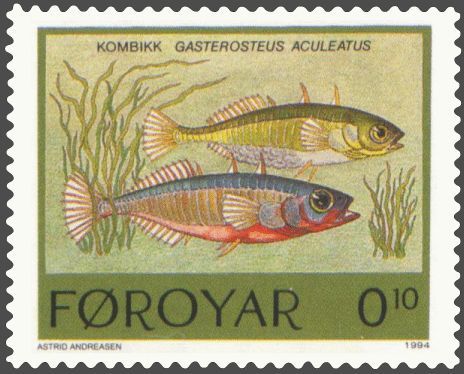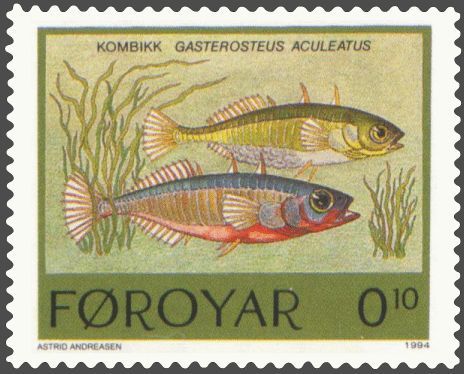Watching a single cell divide – the very beginnings of a life form!!
 Aug 10, 2015 • 10:48 PM UTC
Aug 10, 2015 • 10:48 PM UTC United States
United States 140x Magnification
140x Magnification Microorganisms
Microorganisms
Manu Prakash
I am a faculty at Stanford and run the Prakash Lab at Department of Bioengineering at Stanford University. Foldscope community is at the heart of our Frugal Science movement - and I can not tell you how proud I am of this community and grassroots movement. Find our work here: http://prakashlab.stanford.edu
266posts
1192comments
42locations

This post is the first in the series of “cell division” focused posts under a Foldscope.
Manu : Many of us learn about fertilization and cell division in the classroom, but few of us get to see this fascinating event for themselves live. This is not just for schools; even as scientists we miss out on experiences some of the very fundamental pieces of the biological puzzle – the beginning of an individual’s life itself – the first cell dividing in two. So I met these two people (we will call them Nick and James); and they were talking about this little fish they like. I asked them can I see it; and they actually brought me some eggs to look at. Here is Nick describing why he loves this little fish – the stickleback.
Nick: While at the PanAm EvoDevo conference, I had a chance to chat with Manu about the beautiful microscopic world around us and his quest to film early development of a variety of organisms with the Foldscope. As a stickleback fish researcher, I was happy to help. Although I can find them all along the streams in California; I ended up hiking to the lab for 10 min and bring some unfertilized eggs.
Manu : so Nick and James, what’s so special about this tiny fish?
James & Nick : Threespine stickleback fish live in marine and freshwater environments all over the northern hemisphere. After the last ice age (no seriously, after the last ice age.. ) when the glaciers receded, marine sticklebacks invaded newly formed freshwater lakes and streams. As you can imagine, the environment including salinity, food availability, predators is very different in lakes and streams than the ocean so sticklebacks have adapted a variety of traits.
Male sticklebacks build elaborate nests to court females. When a suitable mate is chosen, females lay their eggs in the nest and, similar to seahorses, the males stay behind to guard the eggs).
Since the development all happens externally; it’s as simple as putting the eggs under a Foldscope and just watching them live. That’s what we did..
Manu: I took some eggs (which are quiet big actually) and added the sperm to the eggs to fertilize them. Because we wanted to catch the first division – we immediately put the eggs under a Foldscope. I used a little piece f clay to hold the glass slide in place and not to squish the eggs.
I used Foldscope with 140x magnification and my iPhone with “lapse it” app. Since I wanted to run a time lapse; I set it to take a picture every 15 second. After the 2.5hr data set was collected – I rendered it at 40fps.
Manu : Many of us learn about fertilization and cell division in the classroom, but few of us get to see this fascinating event for themselves live. This is not just for schools; even as scientists we miss out on experiences some of the very fundamental pieces of the biological puzzle – the beginning of an individual’s life itself – the first cell dividing in two. So I met these two people (we will call them Nick and James); and they were talking about this little fish they like. I asked them can I see it; and they actually brought me some eggs to look at. Here is Nick describing why he loves this little fish – the stickleback.
Nick: While at the PanAm EvoDevo conference, I had a chance to chat with Manu about the beautiful microscopic world around us and his quest to film early development of a variety of organisms with the Foldscope. As a stickleback fish researcher, I was happy to help. Although I can find them all along the streams in California; I ended up hiking to the lab for 10 min and bring some unfertilized eggs.
Manu : so Nick and James, what’s so special about this tiny fish?
James & Nick : Threespine stickleback fish live in marine and freshwater environments all over the northern hemisphere. After the last ice age (no seriously, after the last ice age.. ) when the glaciers receded, marine sticklebacks invaded newly formed freshwater lakes and streams. As you can imagine, the environment including salinity, food availability, predators is very different in lakes and streams than the ocean so sticklebacks have adapted a variety of traits.
Male sticklebacks build elaborate nests to court females. When a suitable mate is chosen, females lay their eggs in the nest and, similar to seahorses, the males stay behind to guard the eggs).
Since the development all happens externally; it’s as simple as putting the eggs under a Foldscope and just watching them live. That’s what we did..
Manu: I took some eggs (which are quiet big actually) and added the sperm to the eggs to fertilize them. Because we wanted to catch the first division – we immediately put the eggs under a Foldscope. I used a little piece f clay to hold the glass slide in place and not to squish the eggs.
I used Foldscope with 140x magnification and my iPhone with “lapse it” app. Since I wanted to run a time lapse; I set it to take a picture every 15 second. After the 2.5hr data set was collected – I rendered it at 40fps.
Manu: it was quiet incredible to watch this for the first time. During the time it took us to collect the data – I also had lunch. This was happening right on my lunch table. At some point I was asked to move benches for cleanup; and you will see that in early part of the video. You want to watch the video a couple of times; since a lot is going on.
Nick and James: This video shows the first cleavage event of a threespine stickleback egg. About 20 contractions occur to accumulate the cytoplasm to the animal pole (Swarup, 1958) and can be seen over the first few seconds. Cleavage begins around 16s and one can see the two bulging cells as a result at 18s. The first cell division has occurred! Both cells quickly flatten out as the egg is rotating out of focus in the video to prepare for the next round of cell division.
Manu; I stopped since I had to run for a talk. Clearly – I am going to more of this. But this is an incredible little thing to watch that makes you realize all the trillions of cells that make us – came from one single cell. Think about that .. One single cell. That one cell makes something that has big thumbs typing this whole thing and capable of thinking about its own existence. Quiet remarkable.
Nick and James : We encourage you to go out to lakes and streams in your neighborhood and look for local populations of sticklebacks.
Resources:
Craig Miller Lab website: http://mcb.berkeley.edu/labs/miller/
More information on early fish development: http://www.ncbi.nlm.nih.gov/books/NBK10100/
More information on early stickleback development: http://dev.biologists.org/content/6/3/373.full.pdf
How to collect your own local stickleback
http://kingsley.stanford.edu/Lab%20Protocols-WEB%202003/Fish%20Methods/Stickleback_Collection.htm
https://en.wikipedia.org/wiki/Stickleback
Nick and James: This video shows the first cleavage event of a threespine stickleback egg. About 20 contractions occur to accumulate the cytoplasm to the animal pole (Swarup, 1958) and can be seen over the first few seconds. Cleavage begins around 16s and one can see the two bulging cells as a result at 18s. The first cell division has occurred! Both cells quickly flatten out as the egg is rotating out of focus in the video to prepare for the next round of cell division.
Manu; I stopped since I had to run for a talk. Clearly – I am going to more of this. But this is an incredible little thing to watch that makes you realize all the trillions of cells that make us – came from one single cell. Think about that .. One single cell. That one cell makes something that has big thumbs typing this whole thing and capable of thinking about its own existence. Quiet remarkable.
Nick and James : We encourage you to go out to lakes and streams in your neighborhood and look for local populations of sticklebacks.
Resources:
Craig Miller Lab website: http://mcb.berkeley.edu/labs/miller/
More information on early fish development: http://www.ncbi.nlm.nih.gov/books/NBK10100/
More information on early stickleback development: http://dev.biologists.org/content/6/3/373.full.pdf
How to collect your own local stickleback
http://kingsley.stanford.edu/Lab%20Protocols-WEB%202003/Fish%20Methods/Stickleback_Collection.htm
https://en.wikipedia.org/wiki/Stickleback

37.7800867 -122.3893766
Sign in to commentNobody has commented yet... Share your thoughts with the author and start the discussion!

 0 Applause
0 Applause 0 Comments
0 Comments
















